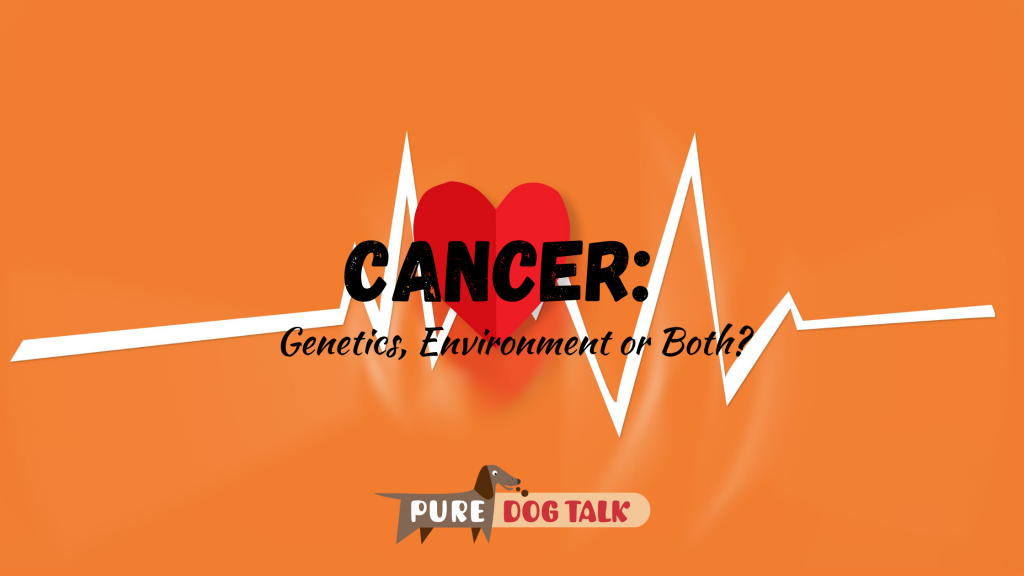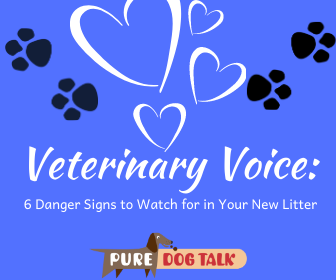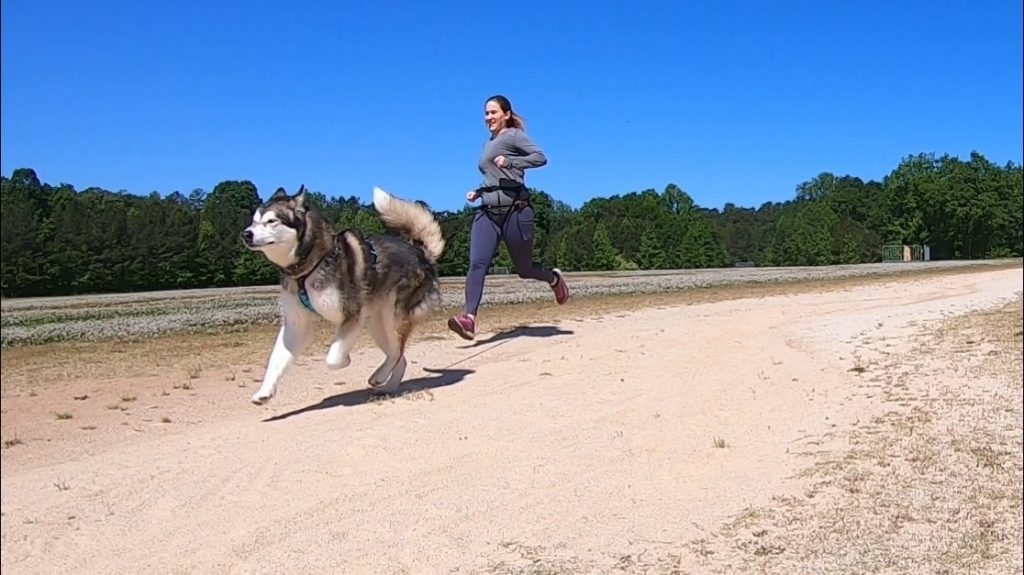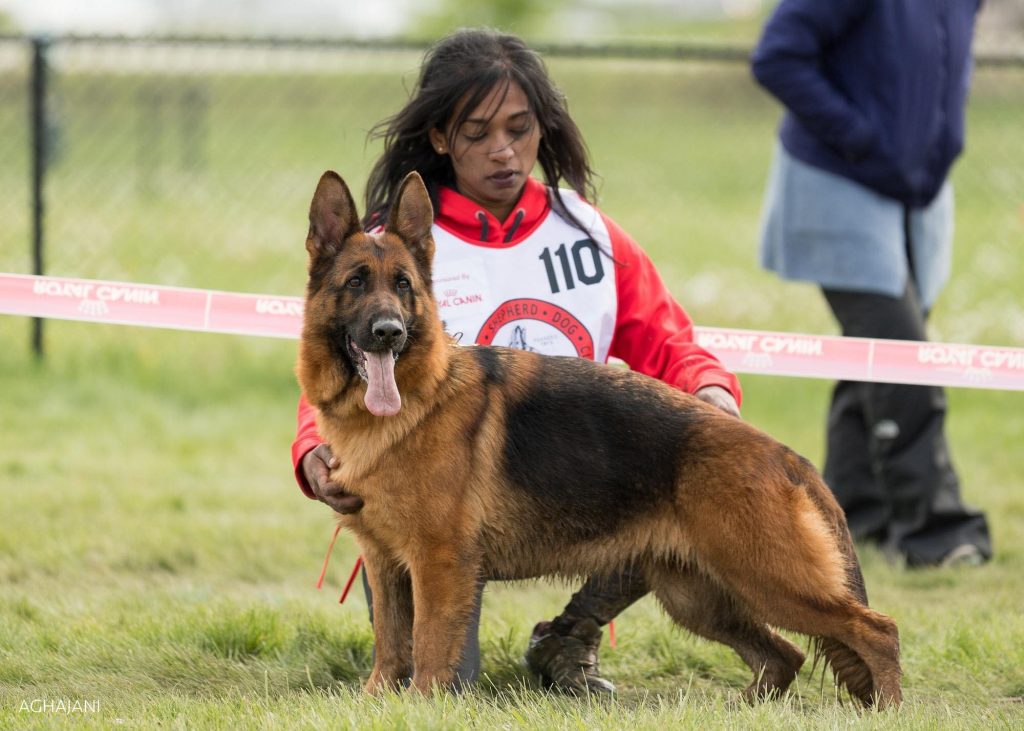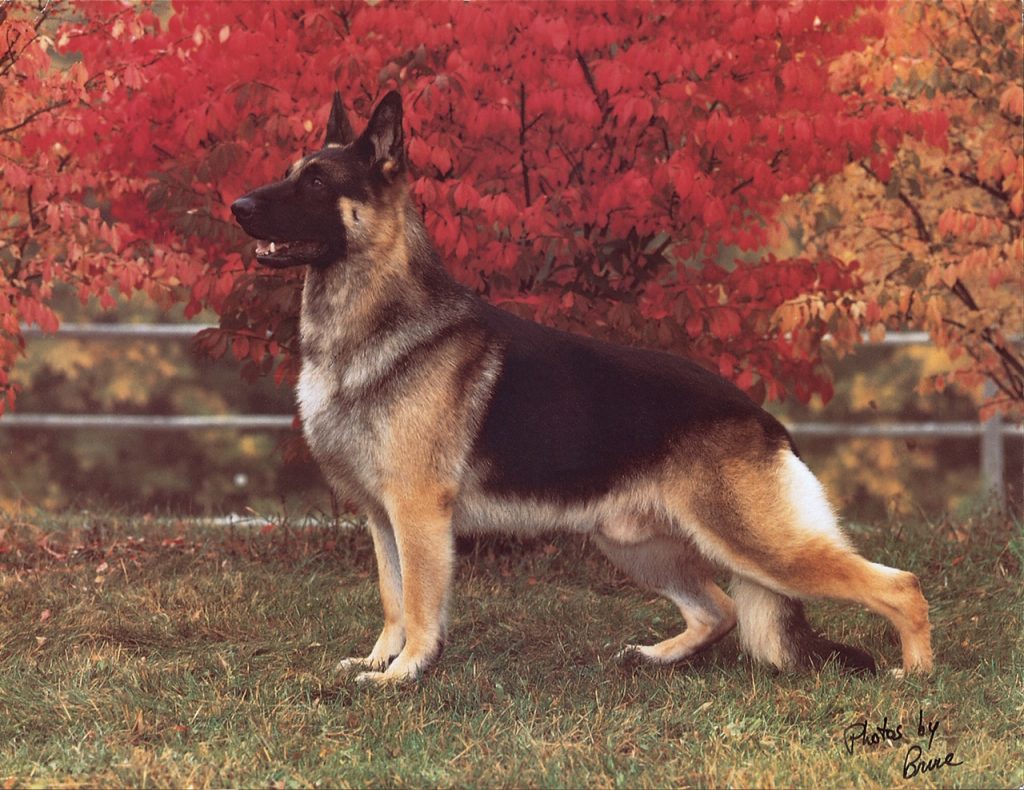Posts by Laura Reeves
419 – Juniors: Skills That Apply in High Powered Careers
Juniors: Skills That Apply in High Powered Careers
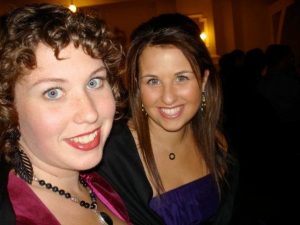 Carley and Cameron Simpson join Laura Reeves for a frank, inspiring conversation on how the skills they acquired as top tier junior handlers have influenced their high powered career paths 20 years later.
Carley and Cameron Simpson join Laura Reeves for a frank, inspiring conversation on how the skills they acquired as top tier junior handlers have influenced their high powered career paths 20 years later.
Work ethic, timeliness, handling disappointment, setting goals, confidence and the edge of determination carried them from rural Washington to the sets of Hollywood and the tracks of international bicycle competitions.
“So really the work ethic and the loyalty and determination and consistency, it all came from having these animals,” Cameron said, “and having to take care of them and knowing that they depend on you, there’s no option to not take care of them.
“It taught us our work ethic. To this day it’s very noticeable in my work environment that I definitely work a lot harder and I take my job very seriously. Anything I do, I put in 100%.”
“Currently I produce television,” Carley said. “I’m an executive producer, just finished up with a Netflix series. (T)imeliness is something I feel every day in my work. Literally we are starting on time and it’s thousands of dollars every minute we go over you know or 10s of thousands of dollars it can be. So the importance of being at a ring at 8:00 AM because you know that that judge is not gonna wait for you has directly translated into my job today.
“When I was in juniors I worked for a number of handlers and I remember I would put post-it notes on my mirror in my bedroom. One of those goals that I had written was to win the Garden. I worked my butt off every little step to try to get to that goal. That goal was always in the back of my mind for everything I did growing up and working with dogs. I didn’t win the Garden, but the fact that I made the finals, the fact that I got Third (in Juniors) it was a cherry on top. That to me was winning. When you learn to work at such a high level in a competition like dog sport, it directly translates then into your later life. You want to always achieve that high level of success again. You’re always working toward, ‘Can I get there. Can I get to that highest level.’”
The only woman in the room
“This (is a) career where it is very uncomfortable to be the only woman standing in the room,” Cameron said of her work in the high-end bicycle industry. “And it’s even more uncomfortable to be the only woman standing in the room who knows more than all of the men in the group and it only takes that little bit, just that break of ice, before everybody else in the room is like, ‘oh OK, yeah we see you as a human, you know we see you as a person, and as an advisor and as an employee, as a helper. All of that has been from dog shows. It’s been from just kind of having that (attitude) of ‘maybe I don’t belong here but I’m going to try anyways’ or I’m going to observe and adapt the situation to win.
“That was something that my mom always taught us. She had this quote, it lives with me every day, which is ‘Life is a game. Play it.’ And I think I took that to the Max. Especially with juniors. If there was a judge who was very eccentric and I could tell that you could win by doing A, B or C, I would do that. A judge who wanted you to look at her every 3 seconds, I did it. I tripped and fell and I won… so it was things like that. I would never show a dog like that, that’s not my style. But that was the game right then and that was the game to win.
“Carley and I are strong enough to realize that we have to love what we do in order for us to put the energy into what we do. We have to love it and so both of us really took that to heart early on. I can’t sit at an office and do this exercise. I have to go out and get a job that it’s gonna push me, that’s going to teach me, that’s ever changing, that’s growing, that has a ton of demand and that’s what we both did. I mean both of us hold very unique jobs in very competitive industries.”
Aim for the Top
“It doesn’t matter what the task is at hand,” Cameron said. “Do it better than anyone else around you. Then you won’t have to do it again and can achieve something better after that. No matter what you’re doing, if you’re going to show this dog study the ring, study the judge, study the game and play it. Don’t just go in half-ass and try to see what you can do. That’s never really gonna work.”
418 – Cancer: Genetics, Environment or Both? Study Seeks Answers
Lori Cesario DVM DACVIM (Oncology), Owner, Canine Cancer Academy joins host Laura Reeves in a conversation about Cancer in dogs. Cesario breaks down what we know and what we don’t know about cancers, genetic basis, environmental triggers and more.
“I would say that we don’t know more than we know, unfortunately,” Cesario said. “I always feel like I leave people wanting a lot more when I have clients ask me why their dog developed cancer. Hopefully that will change. A lot of smart people are working really hard to find more information.
“The big picture is typically no one thing is going to 100% cause cancer in any one dog or person. So we’re looking for risk factors. So does your dog being a certain breed increase risk for developing a certain type of cancer? Or does a certain environmental component increase his or her risk for developing a certain cancer. In people we have some information about certain diets or components of diet increasing certain types of cancers. We’re really lacking a lot of that information in veterinary medicine.”
Cesario notes an important and wide-ranging study of Golden Retrievers that is seeking to answer some of these questions.
“The Morris Animal Foundation is running this study … they have 3,044 Golden retrievers participating and the goal is really to follow these thousands of Golden retrievers over their entire lifetime and get really an exhaustive amount of information. From what is going on in their environment, with their diet, with their genetics, to really determine what nutritional genetic, and environmental factors contribute to cancer and other diseases.
“Not only are they doing routine physical exams, not only are they collecting blood and hair and toenail samples on a regular basis, but they are asking the family questions like does your dog live with a smoker? Do you have carpet or hardwood floors? What does your dog eat? Does it eat vegetables? What type of vegetables? OK bell Peppers, what color Bell Peppers? How many Peppers? Does your dog swim in the pool? In a pond? At the beach? In the ocean?
“So, they’re getting as much information as possible and then they’re banking all of this data and other researchers can use the data. Then over time, they’re finding out which of these dogs develop certain diseases which don’t. We know that up to 65% of goldens will die of cancer, unfortunately, so they decided to run a parallel study called the Golden Oldies study. They are currently recruiting dogs. So basically, they’re looking for Golden Retrievers, purebred ideally, AKC registered better, 12 years old or older that don’t have cancer currently that have never had cancer.”
The link for the Golden Oldies study:
https://www.morrisanimalfoundation.org/golden-oldies-contact-form
417 – Dale On…. Designing a Kennel Building or Dog Room
416 – Neonates: 6 Danger Signs to Watch for in Your New Litter
Neonates: 6 Danger Signs to Watch for in Your New Litter
Doctor Marty Greer joins Host Laura Reeves to talk about a topic that is near and dear to both of them. Troubleshooting guidelines for neonates and baby puppies.
“About the time you think you know it all is when somebody puts their thumb on you and says ha just kidding,” Greer said.
Greer’s four “Hs” for newborn puppies are:
- Hydration
- Hypoxia
- Hypothermia
- Hypoglycemia
“We need to start with making sure that the puppies get delivered quickly enough that they can get out of the birth canal, out of the sack, out of the C-section, whatever direction they come out, get the sac off the face, airway cleared and oxygen delivered as quickly as possible. That’s really critical to good health, good brain development and the whole rest of the cascade starts with that,” Greer said.
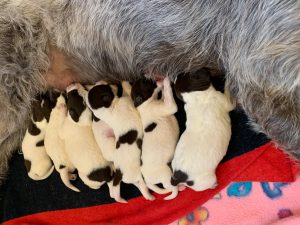 “Hydration goes along with food,” Greer observed. “With a puppy, if they’re not nursing, they’re going to dehydrate and if they’re gonna not nurse, they’re going to have low blood sugar. These all intertwine.
“Hydration goes along with food,” Greer observed. “With a puppy, if they’re not nursing, they’re going to dehydrate and if they’re gonna not nurse, they’re going to have low blood sugar. These all intertwine.
“It’s really important that we keep the puppies nursing. If they’re not adequately nursing then the way to assess that is going to be if they’re not gaining weight and if their urine color isn’t a pale, pale yellow. Puppies should not have a dark colored urine after the first time that they urinate. So it should be pale yellow. The puppy should be gaining weight. You can’t really assess hydration on a puppy the way you do an adult dog or cat where you pinch the skin on the back of their neck and see if it seems tacky or sticky because puppies don’t have enough body fat to have that work the way it does another ages of animal. So we really have to look at urine color and weight gain.
Danger Signs
“You’ll see a puppy that seems weak, seems lethargic, seems listless. It may be really quiet or it may be crying. It just depends on the puppy and what stage in which they are.
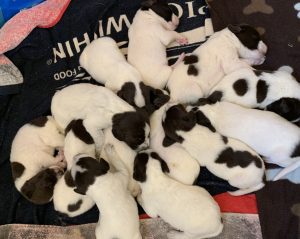 “I see a puppy off by itself, it may not be that the bitch pushed the puppy away. It may simply be that that puppy needs to be warmed, needs to be hydrated, need some oxygen. You do those three things — you feed it, you hydrate it, you warm it up, you get oxygen. And boom. All of a sudden, that puppy regains its strength and it starts to compete and be back with the rest of the group very quickly.
“I see a puppy off by itself, it may not be that the bitch pushed the puppy away. It may simply be that that puppy needs to be warmed, needs to be hydrated, need some oxygen. You do those three things — you feed it, you hydrate it, you warm it up, you get oxygen. And boom. All of a sudden, that puppy regains its strength and it starts to compete and be back with the rest of the group very quickly.
Listen to today’s episode for more tips from Dr. Greer.
For more information in previous episodes, check out some of these links.
https://puredogtalk.com/podcast/127canine-herpes-and-puppy-fatalitiesdr-jean-doddspure-dog-talk-2/
https://puredogtalk.com/podcast/14-dr-gayle-watkins-2-breeders-guide-to-neonatal-puppies-2/
415 – Legal Beagles Bring Support to Dog Breeders
Legal Beagles Bring Support to Dog Breeders
The legal beagles at Good Dog join host Laura Reeves to talk about their brand-new legal Resource Center. Ivy League-educated, top Manhattan legal firm attorneys are putting together an entire package of legal services for dog people.
“Dog breeders can and should be empowered with the law,” said Cat Matloub, Good Dog’s Head of Partnerships & Legal Affairs.
“When we started out at Good Dog, we very quickly realized the need for legal support for dog breeders in a few different areas. We identified five key areas where we can provide real valuable legal support and protection to breeders and help them protect their rights, their dogs, their programs and all of that. The five key areas are number one, how to protect breeders’ legal rights and that’s anything from support if there are ever any issues with animal control or breeders being unfairly targeted or their dogs being targeted.
“We do a lot of assisting with stolen photos and content that’s stolen from breeders. That is an enormous area where the public is continually misled and scammed. It’s contributing to the sort of horrible state of affairs that it is out there for a lot of puppy buyers. So we actually are able to get that content taken down on our breeders’ behalf. We have direct lines to the hosting companies of all these websites now and so breeders can come to us anytime.
Defense from scammers
“We help provide protection to our breeders if they’ve been scammed. If they’re worried about being scammed, we provide secure payment systems so that no breeders can ever be scammed.
“We also create things like ongoing rights to a dog, so if it’s breeding rights or rights to not have the dog bred, or co-ownership, how you can protect yourself and make sure that those rights are protected under the law.
Public Education
“With respect to protecting legal rights, we do a lot of educating the public in terms of helping them understand why breeders do things and why they shouldn’t get upset or unfairly attacked.
“Another huge area for us is legislation advocacy and overreaching regulation. What we do is we provide materials in our legal Resource Center. Letters, statements of fact, an advocacy sort of explaining why regulations are harmful, template letters that can be sent to folks that are breeders in the area and they can go speak at the council.
Contract assistance
“The other three big categories (include) contract assistance. There are so many contracts in the dog world. So sample contracts, annotated with explanations, different provisions calling out where state law applies, all of that in our legal Resource Center. What provisions to include, health care and deposit agreements, all that.
“Another big area that we provide support in is mediation services and support. Whether it’s amongst breeders or club members or breeders and puppy buyers, having an objective third party there has been enormously helpful in those situations. And then a general category of legal support more broadly, with questions around regulation and things like that.”


